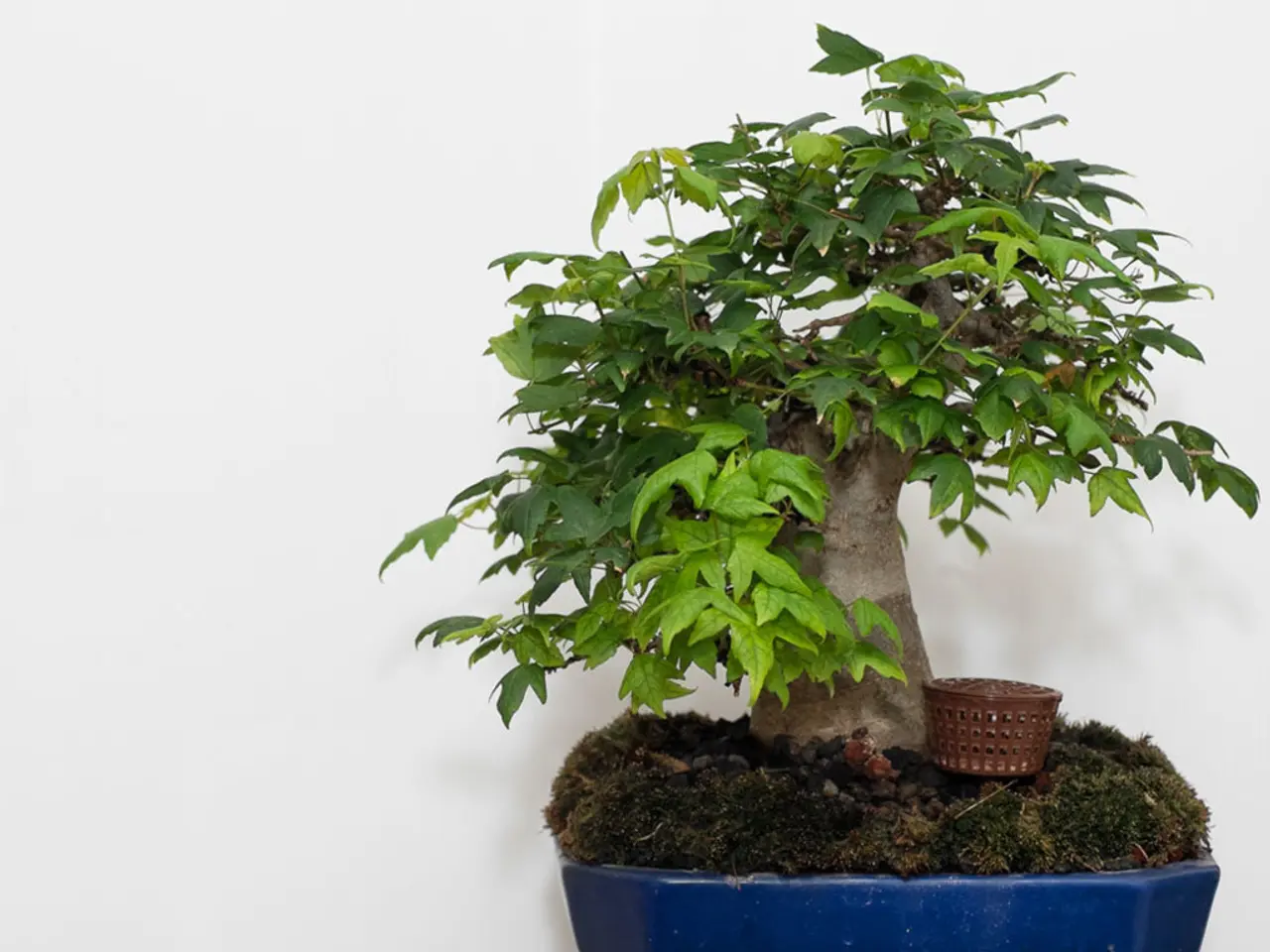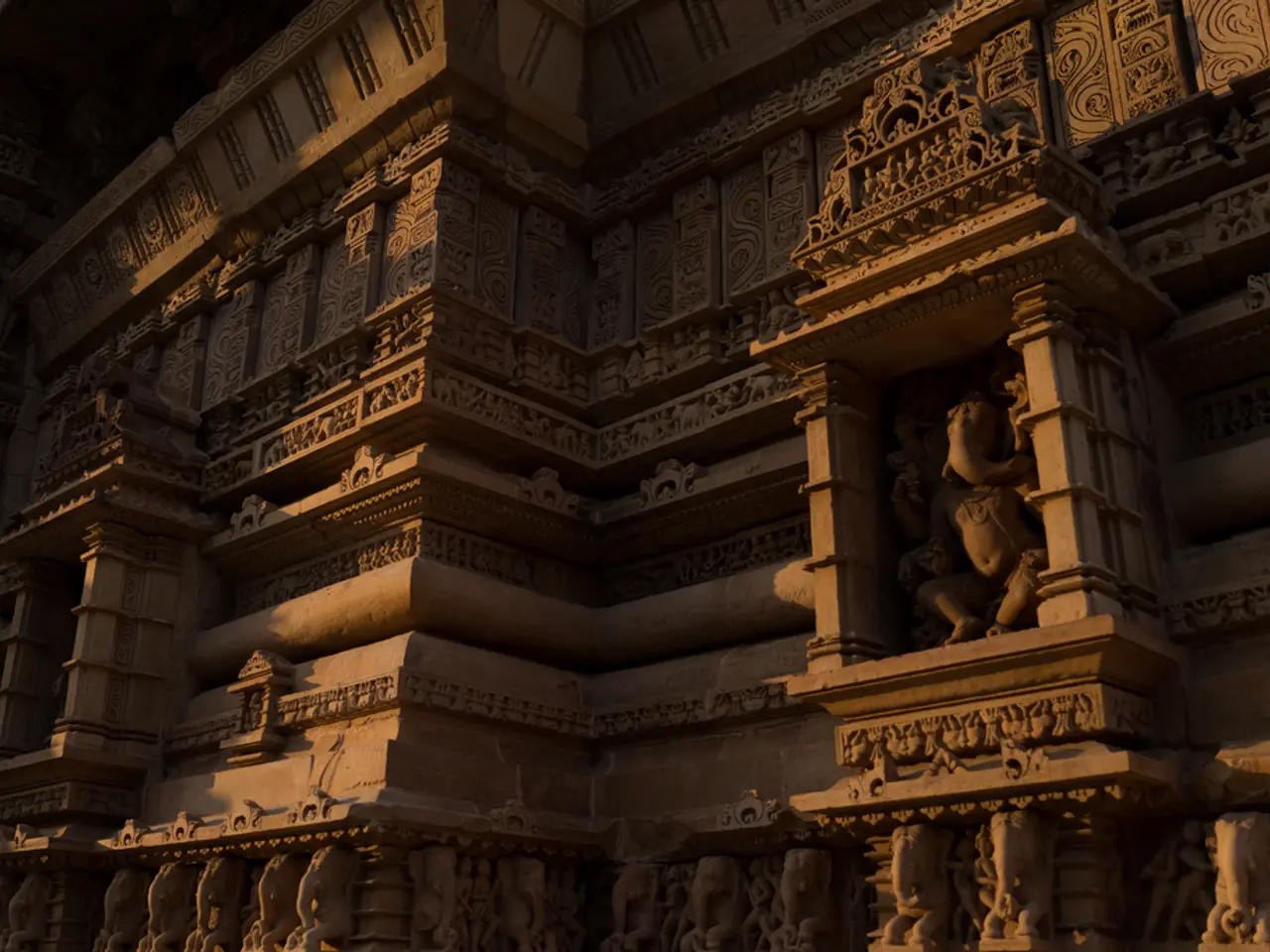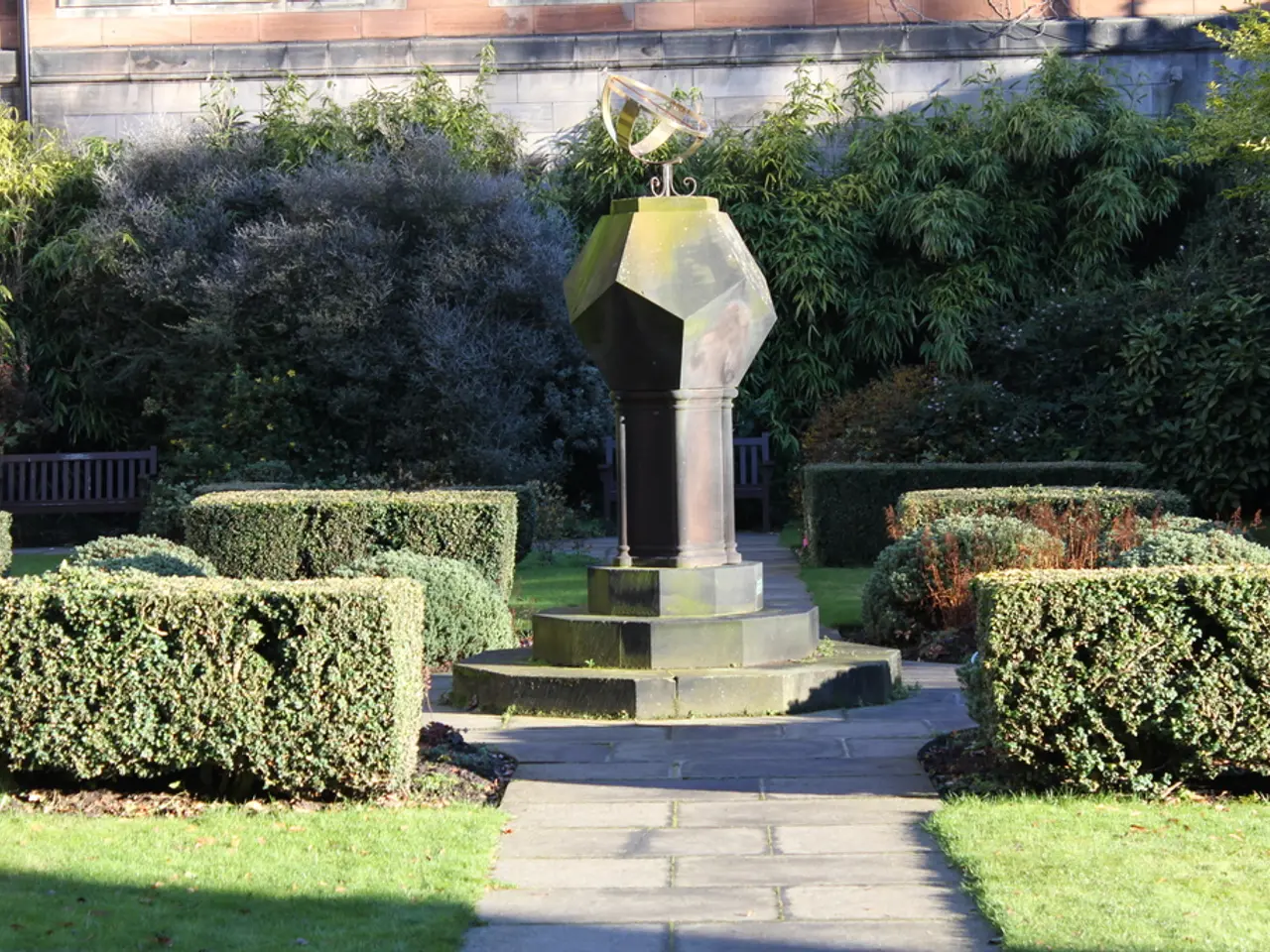Mini Bonsai Set-ups: Engineering Tiny, Self-Contained Bonsai Habitats
In the intricate world of bonsai, maintaining a harmonious and self-sustaining miniature ecosystem is key. This article will guide you through the essential steps to create a thriving bonsai terrarium, suitable for both beginners and children.
Achieving balance and harmony is crucial in the delicate dance of bonsai terrarium cultivation. Pruning and shaping techniques are essential components of this dance, refining the miniature creation and establishing a delicate balance between growth and restraint.
To provide a comfortable environment for your miniature bonsai, keep the terrarium between 65-75°F (18-24°C). Monitor humidity levels between 50-70% to prevent overwatering or drying out. Water sparingly, only when the soil feels dry to the touch, to prevent excess moisture. Overwatering can lead to root rot and fungal diseases, making it a silent killer of many bonsai terrariums.
Bonsai terrarium kits are an excellent option for beginners and children, offering a forgiving and low-maintenance introduction to plant care. These kits can make stunning centerpieces for events or parties, offering a unique and mesmerizing conversation starter.
The judicious selection and placement of accessories can elevate a bonsai terrarium from a mere miniature ecosystem to a visually stunning work of art. Combining rough-hewn stones with smooth glass pebbles or pairing emerald-green moss with weathered driftwood can create a mesmerizing contrast in the terrarium design. Unique container shapes, like spherical or asymmetrical vessels, can add an element of whimsy and surprise to the terrarium design.
Inadequate soil quality can hinder the growth and health of the bonsai. It's vital to select a well-draining, nutrient-rich soil specifically designed for terrariums. Regular potting soil can be too dense, leading to waterlogging and root rot. Instead, opt for a well-draining, specifically designed terrarium soil to guarantee a thriving miniature ecosystem.
Beginners and children can benefit from bonsai terrarium kits, as they offer a forgiving and low-maintenance introduction to plant care. Carefully trim branches to maintain a harmonious relationship between the tree's size and the terrarium's dimensions. Create negative space by leaving strategic gaps to create a sense of airiness and visual flow within the terrarium.
Popular bonsai species suitable for terrarium cultivation include the Chinese Elm and certain Crassula species like Crassula Arborescens (jade plant). They are favored for terrariums because they can thrive in controlled humidity and lighting conditions typical of terrariums. Chinese Elm is hardy, easy to shape, and adaptable to indoor environments with sufficient natural light. Crassula Arborescens, a succulent bonsai, is suitable for terrariums especially if they are open or well-ventilated to prevent excess moisture.
Terrariums provide a humid environment ideal for bonsai species that prefer moderate to high humidity, like some Fuken tea bonsai. However, closed terrariums must be ventilated to prevent mold and leaf damage. In low-light office spaces, select bonsai species that thrive in shade, such as Chinese Elm or Dwarf Schefflera, and utilize low-maintenance terrarium plants like mosses or ferns.
To maintain the longevity of the terrarium, it's vital to strike a balance between moisture, light, and temperature. The deliberate placement of the miniature bonsai within the terrarium sets the tone and draws the viewer's eye to the central focal point. For a visually striking arrangement, place the bonsai off-center, creating a sense of movement and energy within the composition. A well-positioned bonsai creates a sense of balance and harmony within the terrarium.
Insufficient light can lead to the demise of most bonsai species, making it essential to position the terrarium in a spot with suitable illumination. Poor air circulation can lead to the buildup of condensation, fostering an environment conducive to disease and pest infestations.
By following these guidelines, you'll be well on your way to creating a thriving bonsai terrarium, a mesmerizing miniature ecosystem that will bring joy and wonder for years to come.
- A harmonious relationship between the tree's size and the terrarium's dimensions can be maintained by carefully trimming branches.
- The combination of accessories like rough-hewn stones, glass pebbles, emerald-green moss, and weathered driftwood can elevate a bonsai terrarium to a visually stunning work of art.
- Bonsai species like Chinese Elm and Crassula Arborescens (jade plant) thrive in controlled humidity and lighting conditions typical of terrariums, making them suitable for terrarium cultivation.
- A well-positioned bonsai, strategically placed off-center, can create a sense of movement and energy within the terrarium, establishing a feel of balance and harmony.




